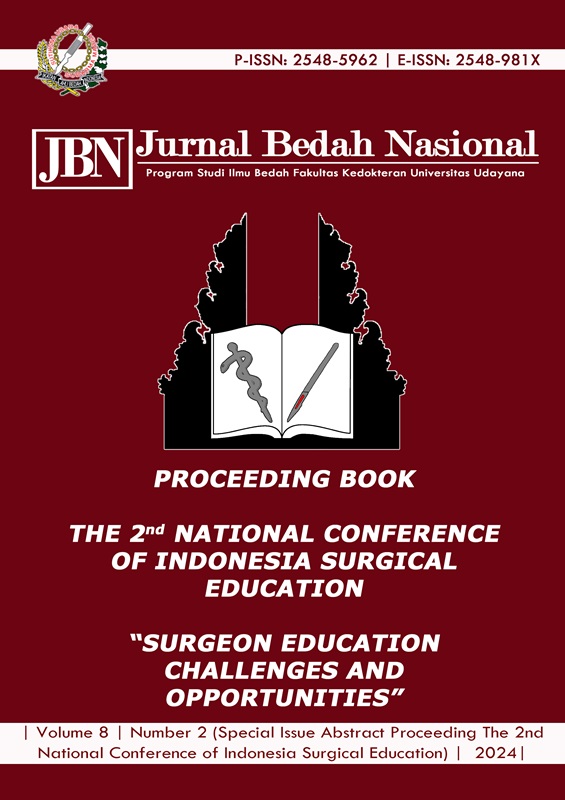094. Scrotal Cavernous Hemangioma in A 2 Year Old Child: A Case Report
Abstract
Background: Hemangioma is a benign tumor that is commonly found in pediatrics, especially in the early years of life or childhood aged one year and under. Hemangiomas can be found in all areas of the body, including the head and neck, trunk, extremities and genitalia. However, cases of hemangioma in the genital area, especially the scrotum, are very rare. The incidence of hemangiomas is reported to be between 1-3% in neonates and 10-12% in children by the age of 12 months. Generally, hemangiomas are most commonly found in the head and neck region, followed by the trunk and extremities, while hemangiomas in the genital area are rare, occurring in only 2% of cases. The genital areas associated with hemangiomas include the glans, penile shaft, perineum, and may extend to the anterior abdomen and pelvis. Case: A report was made of a two year old boy with complaints of swelling. A two year old boy came in with complaints of swelling in the left scrotum. Examination of the external genitalia area revealed a mass. An MRI of the pelvis with contrast showed a multiloculated septate cystic lesion on the left intrascrotal extratesticular, then excision was performed and samples were taken for histopathological examination. The results of histopathological examination with hematoxylin-eosin staining showed that the tissue section contained proliferation of blood vessels with anastomoses in various shapes and sizes, thin-walled and partially thick and lined with a single layer of endothelial cells without signs of atypia, with an impression consistent with cavernous hemangioma. Conclusion: Scrotal cavernous hemangioma requires special attention and further study, because this case is relatively rare and there is still no definite reference regarding the diagnosis and treatment given.
Downloads

This work is licensed under a Creative Commons Attribution 4.0 International License.
Program Studi Ilmu Bedah Fakultas Kedokteran Universitas Udayana. 
This work is licensed under a Creative Commons Attribution 4.0 International License.






